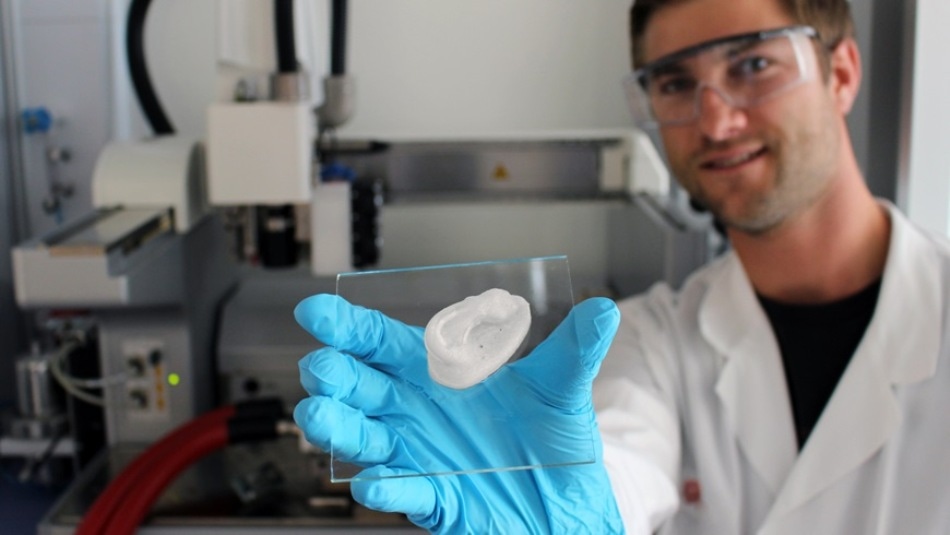Jan 16 2019
It all begins with an ear. Removing the object molded like a human ear from the 3D printer, Empa researcher Michael Hausmann explained that: In viscous state cellulose nanocrystals can easily be shaped together with other biopolymers into complex 3-dimensional structures using a 3D printer, such as the Bioplotter.”
 A 3D-printed ear: Empa researcher Michael Hausmann uses nanocellulose as the basis for novel implants (Image credit: Empa).
A 3D-printed ear: Empa researcher Michael Hausmann uses nanocellulose as the basis for novel implants (Image credit: Empa).
When the structures are cross-linked, they continue to be stable in spite of their soft mechanical characteristics. At present, Hausmann is studying the properties of the nanocellulose composite hydrogels to further improve their stability and also the printing process. The scientist has already applied X-ray analysis to find out the way cellulose is organized and distributed inside the printed structures.
At this stage, the printed ear is fully and solely composed of a biopolymer and cellulose nanocrystals. Yet, the goal is to integrate the human cells as well as therapeutics within the base structure to create biomedical implants. An innovative project is presently ongoing, exploring how chondrocytes, or cartilage cells, can possibly be incorporated into the scaffold to produce artificial cartilage tissue. Once the colonization of the hydrogel with cells is determined, composites based on nanocellulose and resembling the shape of an ear can potentially work as an implant for children afflicted with an inherited auricular malformation as for example, in microtia, in which the external ears are not fully developed. Such malformations can be medically and aesthetically corrected by reconstructing the auricle; or else, the hearing ability may be considerably impaired. During the additional course of the study, cellulose nanocrystals comprising of hydrogels will also be utilized to replace articular cartilage (for example, knee) in cases of joint wear caused by, for instance, chronic arthritis.
Following the implantation of the artificial tissue in the body, the biodegradable polymer material is anticipated to degrade over a period of time. The cellulose itself is biocompatible and not degradable in the body. Yet, its biocompatibility is not the only factor that renders nanocellulose the ideal material for implant scaffolds.
It is also the mechanical performance of cellulose nanocrystals that make them such promising candidates because the tiny but highly stable fibers can extremely well reinforce the produced implant.
Michael Hausmann, Researcher, Empa.
Nanocellulose also makes it possible to integrate an array of functions through chemical modifications within the viscous hydrogel. Therefore, the nanocellulose’s structure and its mechanical properties and interactions with its environment can be particularly customized to the required end product. “For instance, we can incorporate active substances that promote the growth of chondrocytes or that sooth joint inflammation into the hydrogel,” stated the Empa researcher.
Moreover, as a raw material, cellulose is the most abundantly available natural polymer on the planet. Hence, the application of cellulose nanocrystals gains from the simple elegance of the new process and also from the availability of the raw material.
On the glass carrier, the white nanocellulose ear looks glossy. Just out of the Bioplotter, the nanocellulose ear is already dimensionally stable and robust. Hausmann can give his consent for the following steps.